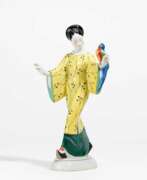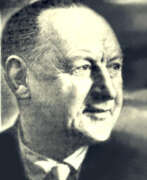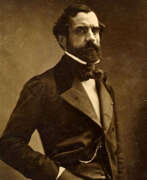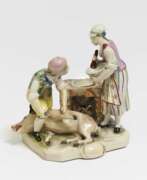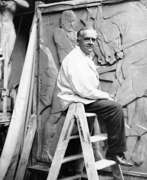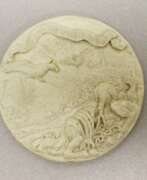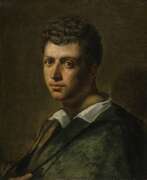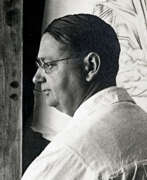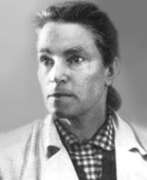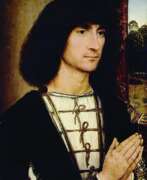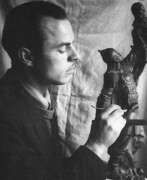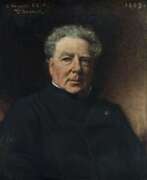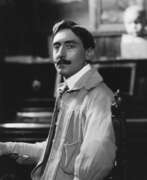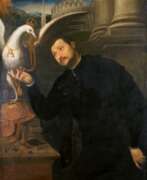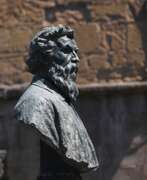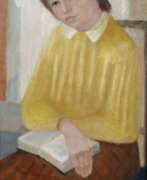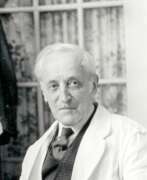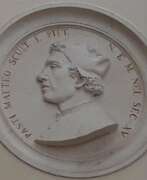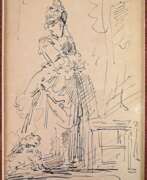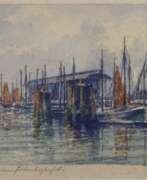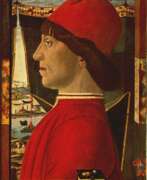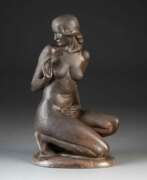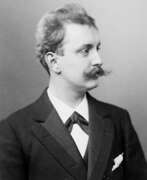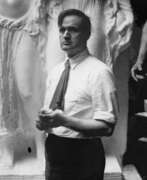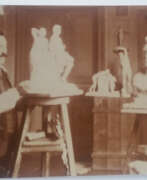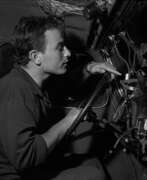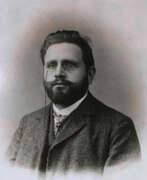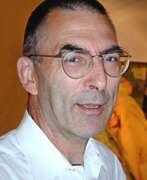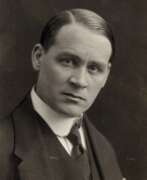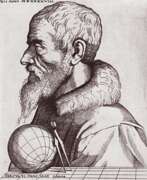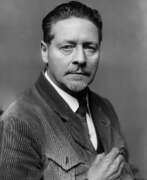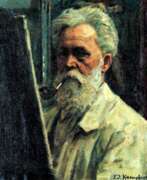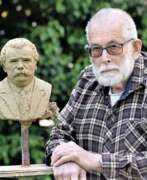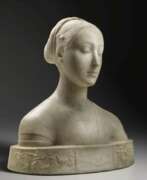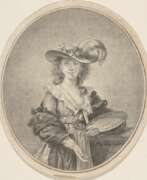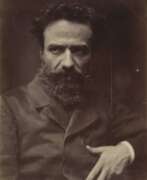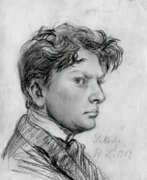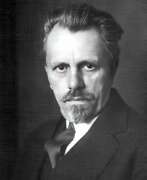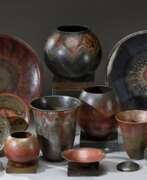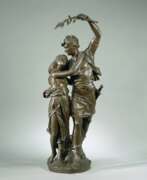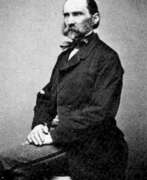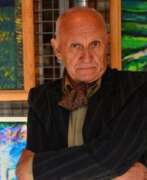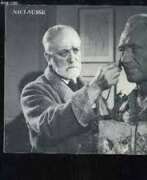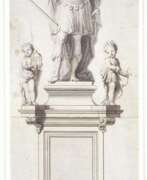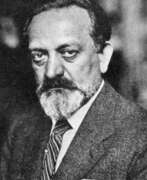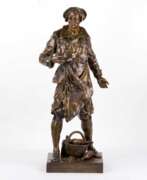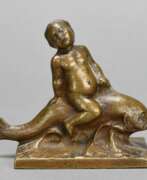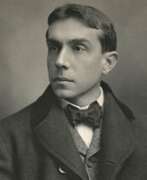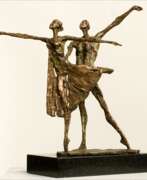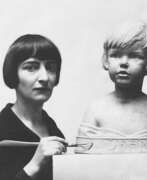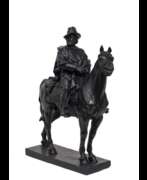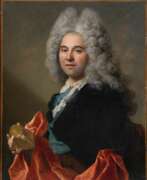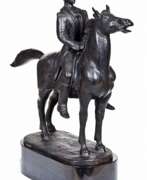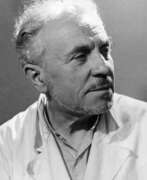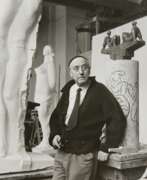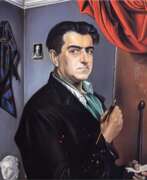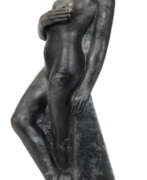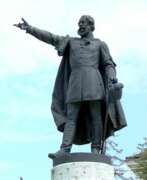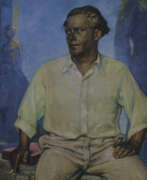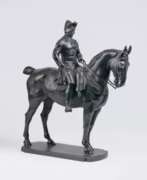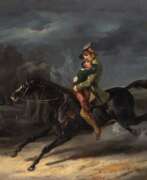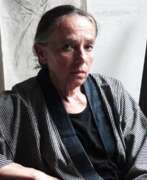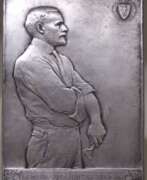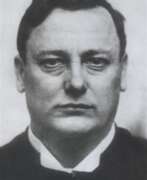Medalists
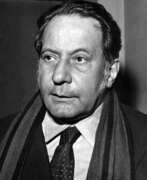

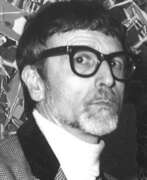

Roger Bezombes was a 20th century French painter, sculptor, medallist and designer. He studied in Paris at the École des Beaux-Arts and was greatly influenced by his friendship with Maurice Denis. Bezomb worked mainly as a painter, adopting Henri Matisse's rich colours in landscapes and figures, often based on observations of 'exotic' cultures, particularly those of the Mediterranean and North Africa.
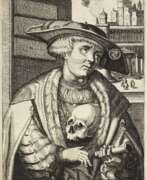

Jakob Binck / Bink, a German artist, was skilled in engraving, etching, painting, and medal making. He worked for various courts in Northern Europe, including the Danish court, and resided in Antwerp. Binck's artistic style resembled that of the Little Masters group. While it is believed he may have been a pupil of Dürer, his early residence in Italy casts doubt on this assumption. Binck's known paintings are primarily portraits, known for their accurate drawing and artistic taste.
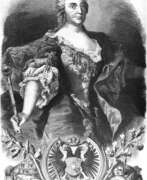

Georg Conrad Ludwig Burger was a German historical painter, illustrator, and medallist. He studied at the Berlin Art Academy, at the same time working at book illustrating; he was also a pupil of Thomas Couture in Paris. Among his best drawings are the illustrations for the works of La Fontaine and a collection of 20 plates known as Die Kanone. After 1869, he devoted himself to decorative painting, his most important work in this line being the walls and ceilings in the Berlin City Hall (1870) and the colossal figures symbolizing the warlike virtues at the School of Cadets at Lichterfelde (1878).
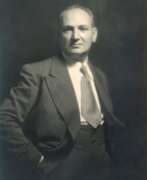

Giannino Castiglioni was an Italian sculptor and medallist. He worked mostly in monumental and funerary sculpture; his style was representational, and far from the modernist and avant-garde trends of the early twentieth century.
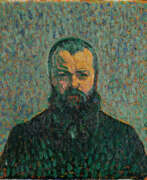

Auguste de Niederhäusern, better known as Rodo, was a Swiss sculptor and medallist. He is considered one of the most influential representatives of Swiss Symbolism.
In 1892 Rodo took part in the Salon de la Rose-Croix exhibition and for the next six years was a collaborator of Auguste Rodin.
Between 1900 and 1902, Rodot created several works for the Federal Palace in Bern, which was under construction: at the top of the pediment is a sculptural group symbolising political independence, executive and legislative power; he also created the capstones on the arched windows of the south façade.
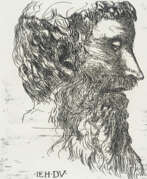

Jean Duvet was a French Renaissance goldsmith and engraver, now best known for his engravings. He was the first significant French printmaker. He produced about seventy-three known plates, that convey a highly personal style, often compared to that of William Blake, with very crowded compositions, a certain naive quality, and intense religious feeling. According to Henri Zerner, his work has a "freedom and immediacy that have no equivalent in Renaissance printmaking".
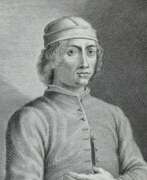

Francesco Francia, also known as Francesco Raibolini, was an Italian painter, goldsmith, and medallist from Bologna. He began his career in the late 15th century and collaborated with artists like Lorenzo Costa, drawing inspiration from the styles of Ercole de' Roberti, Perugino, and Raphael.
Francia ran a successful workshop and trained notable artists such as Marcantonio Raimondi and Ludovico Marmitta. While it was once rumored that Raphael's work caused him to die of depression, their friendship has since debunked this claim.
Francesco Francia passed away in Bologna, and his sons, Giacomo Francia and Giulio Francia, also became artists.
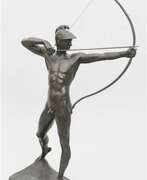

Ernst Moritz Geyger was a German artist known for his work in sculpture, painting and engraving. His work is included in the collections of the Los Angeles County Museum of Art, the Carnegie Museum of Art and the Fine Arts Museums of San Francisco.
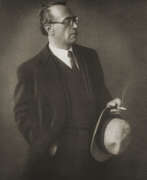

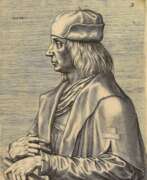

Quentin Matsys (Dutch: Quinten Matsijs), a Flemish painter born around 1466 in Leuven, is recognized as a pivotal figure in the Early Netherlandish tradition and a founder of the Antwerp school of painting. His initial training as an ironsmith in his father's workshop lent a unique craftsmanship to his artistic endeavors. Matsys' works, which often contained religious themes and satirical elements, were instrumental in the transition from medieval to Renaissance art in northern Europe.
Matsys' early works exhibit the influence of Hans Memling, and later, his exposure to Italian Renaissance artists, especially Leonardo da Vinci, is evident in his refined technique. This amalgamation of Northern European and Italian influences resulted in a distinctive style that earned him the reputation as the leading painter in Antwerp during the early 16th century.
Today, Matsys' masterpieces are housed in prestigious institutions like the National Gallery in London, serving as a testament to his enduring legacy. His contributions to the art world resonate with collectors and historians alike, who admire his innovative blend of technical skill and evocative expression.
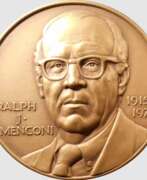

Ralph J. Menconi was a prominent sculptor and medallist, who received many accolades during his lifetime. Among them were the Ellen P. Speyer award for original sculpture in 1941, the Freedom Foundation Award, the Michelangelo Award, the American Numismatic Association's Sculptor of the Year award in 1970, and the Golden Plate Award of the American Academy of Achievement in 1971. He also received an honorary Doctorate in Fine Arts from Hamilton College, Clinton, New York, in 1971. He became known as the "Sculptor of Presidents" because of the 36-medal series of the American presidents he created for Presidential Art Medals.
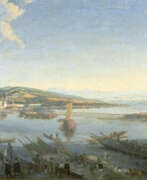

Conrad Meyer, a Swiss painter, engraver, and medallist, made significant contributions to the art world of his time. Initially a painter of portraits and landscapes, Meyer eventually shifted his focus to copper engraving, producing over a thousand works in his lifetime. Notable among his creations is the map of Switzerland by Conrad Gyger, which he produced in 1657, and his Planisphaerium Coeleste from 1681.
Conrad Meyer's artworks, such as "The Wild Man" (1649), "The Devil's Kitchen Visited by an Angel," and "Allegory of the Transience of Life" (1651), showcase his meticulous technique and are held in high regard, with several pieces housed in the Metropolitan Museum of Art. His work "Parable of the Ungrateful Servant" is part of the Philadelphia Museum of Art's collection, demonstrating his prowess in etching as well.
For art collectors and experts, Conrad Meyer's contributions to Swiss art and engraving offer valuable insights into the 17th-century European art scene, particularly in the context of Zurich. His legacy is encapsulated in the diverse range of subjects he explored, from detailed landscapes to intricate portraits and allegorical scenes, reflecting the cultural and artistic vibrancy of his era.
If you are an enthusiast or collector keen on Conrad Meyer's art, consider signing up for updates related to new sales and auction events concerning his works. This will ensure you stay informed about opportunities to acquire pieces connected to this notable Swiss artist.
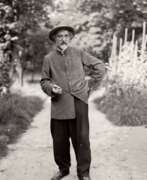

Constant Montald was a Belgian painter, muralist, sculptor, and teacher. In 1874, while receiving an education in decorative painting at the technical school of Ghent during the day, Montald also enrolled in the evening-classes of the Royal Academy of Fine Arts in Ghent. There he won in 1885 a competition and received a grant from the city which enabled him to live and study briefly in Paris at the École des Beaux-Arts. In Paris he painted his first monumental canvas, The Human Struggle. In 1886, Montald went on to win the Belgian Prix de Rome. He then went on a grand tour of Italy. He traveled extensively until he eventually settled in Florence, where he made preparations for a Grand work he eventually completed in Rome. This grand work, titled "Social Contradictions", was kept in the basement of the Royal Museum of Art and History of Brussels after it was displayed there in 1890 after being sent over from Rome. The First World War prevented Montald from painting Monumental works, instead he focused on painting on an easel. Montald co-founded the group L'art monumental. This group promoted a decorative monumental style connected to architecture.


Georges Morin was a German painter, sculptor, and medalist, showcased his versatility through architecture sculptures, standalone artworks, medals, statues, and figures.
Morin studied at the Berlin Art Academy from 1892 to 1896, learning under Ernst Herter and Peter Breuer. Following his successful exams, he journeyed to Paris for further studies, captivated by oriental dancers of Commedia dell'arte. Morin painted and sculpted these dancers, drawing inspiration from their performances. He also traveled to Italy and England before returning to Berlin, residing on Görrestraße 16 in Berlin-Friedenau. He was surrounded by fellow artists in the vicinity. Morin's affiliations included the District Art Deputation and associations of visual artists in Berlin and Germany, providing him platforms to exhibit his creations.
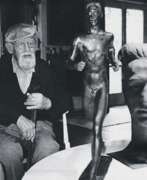

Fritz Nuss is a German painter, sculptor and medalist, as well as a draftsman.
During his long creative life he created many sculptural works of art, which have been recognized at numerous exhibitions around the world. The theme of the sculptor Fritz Nuss's entire life was the human body, which he was able to depict in new facets and poses. His works captivate with purity of lines, monumental language, plasticity of form and a special, chamber emotionality and sensuality. Nuss created both small and large sculptures for public spaces; he designed the Elli-Heuss-Knapp memorial fountain in Stuttgart and many other large sculptures and fountains in Aalen, Freudenstadt, Göppingen, Stuttgart, etc.
Nuss was also a recognized medallist. The works he created can today be found in many famous coin collections around the world. At the end of his life, the half-blind artist, unable to sculpt, created many drawings that just as much praise the beauty of the human body.
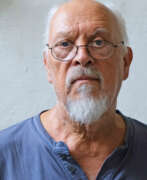

Karl-Ulrich Nuss is a German artist and sculptor who creates large-scale bronze compositions.
His father was the sculptor Fritz Nuss (1907-1999), Karl-Ulrich Nuss continued his work and developed an unmistakable design style that characterizes all his sculptures. They depict single people, couples, families, as well as new fantastical creations from the animal kingdom. These works can be seen in public spaces in Bochum, Frankfurt/Main and Stuttgart.
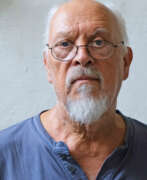

Karl Ulrich Nuss is a German artist and sculptor who creates large-scale bronze compositions.
His father was the sculptor Fritz Nuss (1907-1999), Karl Ulrich Nuss continued his work and developed an unmistakable design style that characterizes all his sculptures. They depict single people, couples, families, as well as new fantastical creations from the animal kingdom. These works can be seen in public spaces in Bochum, Frankfurt/Main and Stuttgart.
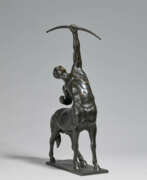

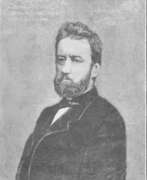

Ivan Ivanovich Reimers (Russian: Иван Иванович Реймерс) was a mid-nineteenth-century Russian artist of German origin. He is known as a painter, medallist and sculptor.
As a sculptor, Ivan Reimers became famous for creating bas-reliefs on religious themes for churches and decorating the Hermitage building in St. Petersburg. As a painter, the artist showed himself as a genre painter, landscape painter, portrait painter. He also worked successfully in watercolors.
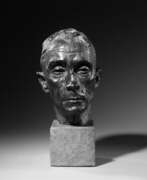

Richard Scheibe was a German artist primarily remembered as a sculptor. He trained as a painter, and taught himself to sculpt beginning in 1906. From 1925-1933 he taught at the Städelsches Kunstinstitut in Frankfurt am Main. He was dismissed from teaching when the Nazis seized power but was reinstated in 1934. He received various recognitions during the Third Reich, including the Goethe-Medaille für Kunst und Wissenschaft and placement on the Gottbegnadeten list. After World War II he continued to sculpt, including a figurative piece for the Memorial to the German Resistance. His work was also part of the sculpture event in the art competition at the 1928 Summer Olympics.
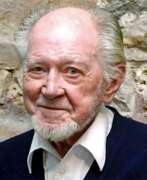

Ronald William Fordham Searle was an English artist and satirical cartoonist, comics artist, sculptor, medal designer and illustrator. He is perhaps best remembered as the creator of St Trinian's School, a fictional all-girls school known for its unruly students and mischievous antics, and for his collaboration with Geoffrey Willans on the Molesworth series. His professional career begins with his documentation of the brutal camp conditions of his period as a prisoner-of-war of the Japanese in World War II in a series of drawings. Most of these drawings appear in his 1986 book, Ronald Searle: To the Kwai and Back, War Drawings 1939–1945. In the book, Searle also wrote of his experiences as a prisoner. At least one of his drawings is on display at the Changi Museum and Chapel, Singapore, but the majority of his originals are in the permanent collection of the Imperial War Museum, London, along with the works of other POW artists. Searle produced an extraordinary volume of work during the 1950s, including drawings for Life, Holiday and Punch.[8] His cartoons appeared in The New Yorker, the Sunday Express and the News Chronicle. After moving to Paris in 1961, he worked more on reportage for Life and Holiday and less on cartoons. He also continued to work in a broad range of media and created books (including his well-known cat books), animated films and sculpture for commemorative medals, both for the French Mint and the British Art Medal Society. Searle did a considerable amount of designing for the cinema.
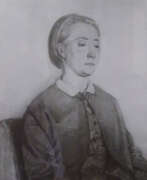

Helena Skirmunt was a Polish, Lithuanian, and Belarusian artist of the mid-19th century. She is known as a painter, graphic artist and sculptor.
As an artist, Helena Skirmunt painted landscapes, portraits, and icons; as a sculptor, she created numerous portrait medallions and religious works. She was also famous for creating "historical" chess pieces, choosing as their theme the Viennese campaign of the Polish King Jan III Sobieski, who defeated the Turkish army in 1683.


Massimiliano Soldani or Massimiliano Soldani Benzi was an Italian baroque sculptor and medallist, mainly active in Florence. Soldani developed into one of the finest bronze casters of his time in Europe. Though first specialising as a medallist, Soldani also produced bronze reliefs, bronze vases and free-standing figures and busts.
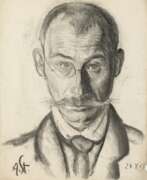

Arthur Storch was a German sculptor and porcelain modeller.
Born and raised in a family of artists, Storch was trained as a modeller at the Volkstädter porcelain factory and then studied at the Bavarian Academy of Fine Arts. Having established himself as a sculptor and medallist, he worked in Munich and Hamburg, and contributed to architectural jewellery in cities such as Wiesbaden and Hamburg. His legacy includes around 100 drawings, 12 medals and 40 sculptures.
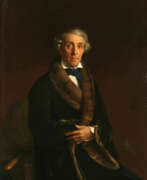

Fyodor Petrovich Tolstoy (Russian: Фёдор Петрович Толстой) was a Russian sculptor, painter, and medallist, renowned for his contributions to Russian classicism and romanticism. Born in Saint Petersburg in 1783, he became a prominent figure in the Russian art world. As a vice-president of the Imperial Academy of Arts, Tolstoy produced significant works, including medallions commemorating the Patriotic War of 1812.
Tolstoy's artistic style is characterized by its meticulous detail and classical influence. His works, such as the intricate medallions and bas-reliefs, often depict historical and allegorical scenes. These pieces are celebrated for their technical precision and emotional depth, embodying the spirit of the era.
Many of Tolstoy's creations are housed in prestigious collections, including the State Hermitage Museum and the State Tretyakov Gallery. His legacy continues to inspire and influence Russian art and culture, making him a significant figure in the history of Russian fine arts.
Subscribe for updates on new product sales and auction events related to Fyodor Petrovich Tolstoy. Stay informed about the latest opportunities to acquire pieces of his artistic legacy.


Jaroslav Vacek was a Czech and Slovak artist and sculptor.
Jaroslav Vacek was one of the leading representatives of post-war artistic modernism. His work focused on the human figure, creating strongly geometricized or abstracted torsos. Vacek mainly created sculptures for public spaces. His works are represented in the National Gallery in Prague and in many other exhibition galleries.
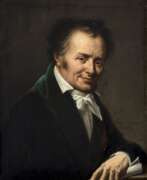

Dominique Vivant, Baron Denon was a French artist, writer, diplomat, author, and archaeologist. Denon was a diplomat for France under Louis XV and Louis XVI. He was appointed as the first Director of the Louvre museum by Napoleon after the Egyptian campaign of 1798-1801, and is commemorated in the Denon Wing of the modern museum and in the Dominique-Vivant Denon Research Center. His two-volume Voyage dans la basse et la haute Egypte ("Journey in Lower and Upper Egypt"), 1802, was foundational for modern Egyptology.
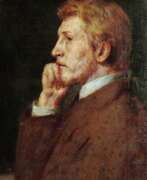

Adolf von Hildebrand was a German sculptor of the second half of the 19th and early 20th centuries, a representative of academism. He was also fond of architecture, painting, graphics and medallions.
Adolf von Hildebrand is also known as an authoritative art theorist, his fundamental work "The Problem of Form in Fine Art," first published in 1892, was subsequently translated into dozens of foreign languages.
Hildebrand spent much of his life outside Germany. In Italy he was strongly impressed by the work of the best masters of antiquity and the Renaissance. Soon, together with a group of like-minded people, he founded the "Roman circle". The members of this creative association urged their colleagues to abandon decadent attitudes in favor of the true values of ancient art.
In recognition of his achievements, the King of Bavaria knighted Hildebrand at the end of his life and the aristocratic prefix "von" was added to his name. The sculptor's works have survived in many European cities, but his most famous architectural and sculptural works are in Munich.
